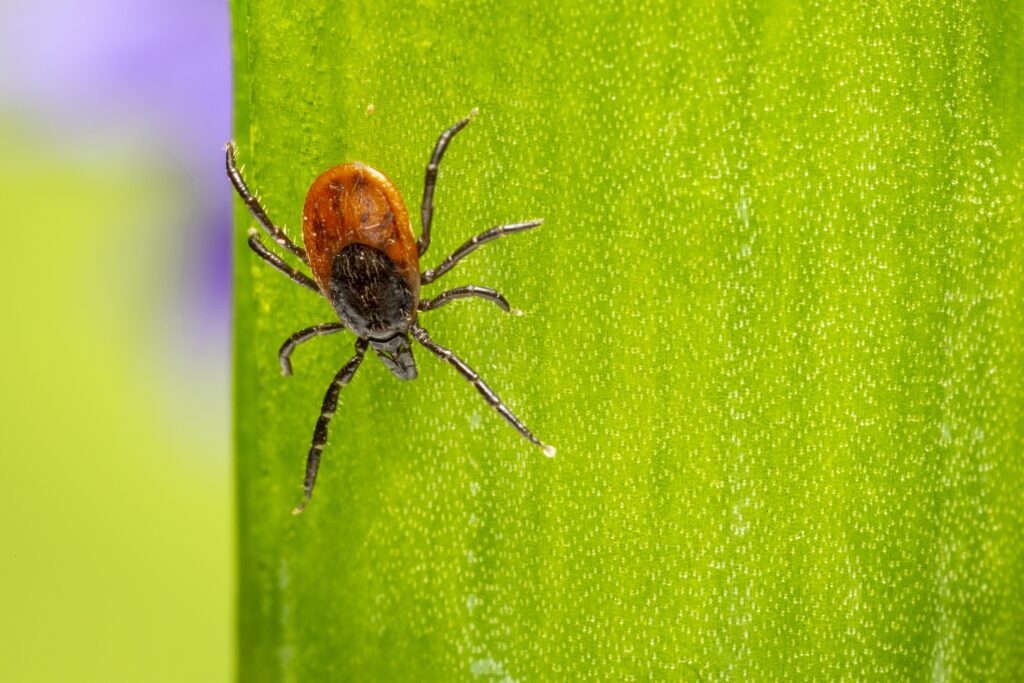
Table of Contents
Ticks on dogs are a common concern for dog owners worldwide. These tiny parasites not only cause discomfort to our beloved pets but can also transmit serious diseases.
This article is about ticks on dogs, their potential health hazards, and effective strategies to protect your four-legged companions.
As responsible pet owners, it is crucial to understand the risks associated with ticks and take proactive measures to prevent infestations.
A. Understanding Ticks on Dogs
Ticks are arachnids that belong to the same family as spiders and scorpions.
These blood-feeding parasites are found in various environments, including grassy areas, forests, and even urban parks.
Ticks go through several life stages, starting as eggs, progressing to larvae, nymphs, and eventually becoming adult ticks.

They latch onto a host—such as dogs, cats, or even humans—to feed on their blood.
Ticks have specialized mouthparts that allow them to anchor securely to the host’s skin.
B. Health Risks for Dogs
Ticks on dogs pose a significant threat to the health of dogs. They can transmit a variety of diseases, including Lyme disease, Rocky Mountain spotted fever, Ehrlichiosis, Anaplasmosis, and Babesiosis.
These illnesses can cause symptoms ranging from mild discomfort to severe organ damage, and in some cases, they can be fatal.
Common signs of tick-borne diseases in dogs include fever, lethargy, joint pain, loss of appetite, and swollen lymph nodes.
C. Tick Prevention Strategies
While it’s important to remove ticks on dogs promptly when you find them, preventing future tick bites is crucial for their long-term health and well-being.
Here are some additional measures you can take to minimize the risk of tick infestations and protect your furry friend:
C1. Maintain a Tick-Free Environment
Regularly mow your lawn and keep the grass short. Ticks prefer tall grasses where they can easily latch onto passing animals.
Remove leaf litter, brush, and debris from your yard, as these provide hiding places for ticks.
Create a barrier around your property using gravel or wood chips to separate the wooded or grassy areas from the main living spaces.
Consider fencing your yard to keep wildlife, such as deer and rodents, out. These animals can carry ticks into your yard.
C2. Use Tick Preventatives
Consult with your veterinarian to choose the most appropriate tick-prevention products for your dog. These can include topical treatments, oral medications, or tick collars.
Ensure that you use veterinary-recommended products specifically designed for dogs.
Human tick repellents may contain ingredients that are toxic to dogs.
Follow the instructions carefully when applying or administering tick preventatives, and adhere to the recommended schedule for reapplication or dosage.
C3. Regularly Inspect and Groom Your Dog
Perform thorough tick checks on your dog after outdoor activities. Pay close attention to their ears, head, neck, armpits, belly, and between their toes.
Run your fingers through your dog’s fur, feeling for any small bumps or embedded ticks. Ticks can be as small as a pinhead, so a meticulous inspection is necessary.
If you find any ticks, remove them immediately using fine-tipped tweezers or a tick removal tool, as described in the previous section.
C4. Consider Vaccination
Consult your veterinarian about available tick-borne disease vaccines for dogs, such as the Lyme disease vaccine.
Vaccination can provide an additional layer of protection against specific tick-borne illnesses in regions where they are prevalent.
C5. Educate Yourself
Stay informed about tick-borne diseases common in your area. Understand the signs and symptoms to watch out for in case your dog is bitten by an infected tick.
Be aware of peak tick seasons and take extra precautions during these times.
Join local community groups or online forums where you can exchange information and experiences with other dog owners facing similar challenges.
By implementing these preventive measures, you can significantly reduce the likelihood of future tick bites on your dog.
Remember, prevention is always better than treatment when it comes to tick-borne diseases.
Your dog’s health and happiness are worth the effort of proactive tick prevention.
D. Tick Removal
If you find ticks on your dog, it is crucial to remove them promptly. Use fine-tipped tweezers or a tick removal tool to grasp the tick as close to the skin as possible.
Slowly and gently pull upward, ensuring that you remove the entire tick, including the mouthparts.
Avoid squeezing or twisting the tick, as this may cause its mouthparts to break off and remain embedded in the skin.
After removing the tick, clean the area with antiseptic and wash your hands thoroughly.
It’s also advisable to save the tick in a container, if possible, for identification purposes should your dog show any signs of illness later.
E. Conclusion
Ticks on dogs can be a menace to our canine companions, but with proper knowledge and preventive measures, we can significantly reduce the risk of infestation and tick-borne diseases.
Regular grooming, tick control products, tick checks, and environmental management all play vital roles in keeping our dogs safe.
For more information visit the Centre for Disease Control and Prevention page link.
F. FAQ’s
How do I control ticks on dogs?
Use tick prevention products like spot-on treatments, tick collars, or oral medications. Regularly check and remove ticks from your dog’s fur.
What are some products to prevent ticks on dogs?
Spot-on treatments, tick collars, oral medications, and tick sprays are commonly used for tick prevention in dogs.
How often should I check ticks on my dog?
Check your dog for ticks daily, especially after outdoor activities in tick-prone areas.
How do I remove ticks from my dog?
Use tweezers or a tick removal tool to grasp the tick’s body close to the skin and pull it out gently and steadily. Avoid twisting or crushing the tick.
Can ticks on dogs cause health problems?
Yes, ticks can transmit diseases to dogs, such as Lyme disease and ehrlichiosis, which can cause various health issues if left untreated.
Are there natural remedies to control ticks on dogs?
Some natural remedies include using essential oils like neem or cedar oil, or using natural tick repellents. However, their effectiveness may vary, and it’s recommended to consult with a veterinarian before using them.